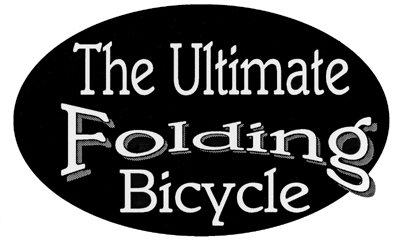I have recently been asked some questions in a couple of Brompton FaceBook Groups about some of my specifications & frame design choices…I though others might benefit from the answers, so I decided to turn them into this little post.
The first question was technically unasked — but needed to be addressed, in order to properly contextualize the question that WAS asked and the discussion that ensued (about replacing original steel Brompton frame components – including the mainframe with Asian-sourced aftermarket / 3rd-party titanium components.
My response is as follows:
“The overarching more important question is whether anyone has compared the various Chinese Ti mainframes for assessment of metallurgical and fabrication quality, and more significantly, impaired performance characteristics (i.e. the excessive flex – that FEA suggests is unavoidable, if the same tube O.D.s are maintained – and consequent poor handling and/or high speed instability that should accompany that misguided un-compensated translation from steel to Ti.) That is why Brompton have wisely refused to offer a Ti mainframe.“
UPDATE [7/1/22]: The larger diameter tubing used in the mainframe on the recently-introduced T-Line frame reflects this obvious fact
The follow-up question was about rear triangles:
“I’m interested to know how the wall thickness compares between both official steel and titanium rear triangles. And indeed the forks too. Having raced steel carbon and titanium frames over many years my instinct tells me Brompton frames are pretty over engineered.”
My response regarding Brompton’s rear triangle design vs. the UFB’s rear triangle design is:
“The last time I checked (a very long time ago now) the wall thickness of the tubes used in Brompton steel triangles I believe was pretty heavy — .049″ or more, if I recall correctly. Their titanium triangles were similarly rather conservatively spec’ed. [Ben at Kinetics would know for sure!] When I built steel replacement triangles, I used to fabricate them from seamless .035″ 4130 heat-treated tubing. When I redesigned my custom triangles – with the help of a top-tier aerospace defense contractor – for titanium, we spent months optimizing the design to reduce weight to a bare minimum, while preserving strength, stiffness, and durability — by taking advantage of that team’s extensive cutting-edge metalurgical and engineering experience in designing specialized military & aerospace titanium projects (and insanely expensive, very specialized proprietary in-house advanced stress modeling applications). It is by having had access to all those crazy cloak-and-dagger military aerospace tools that I have been able to utilize specially-sourced & carefully-selected very-thin-wall aerospace tubing (.026″ – .027”)- as well as specially-selected arcane alloys for my custom- designed dropouts, pivot plates, and suspension bumper plate that are – as far as I know – different than anything *anyone* else is currently using in any bicycle application. The result is a triangle that is radically different in many basic design respects – and thus considerably lighter – than all the other titanium triangles I have seen so far. I have been “obsessive” about all this simply because the ONLY way to achieve the extremely light final weight of the UFB without the common compromises is to sweat ALL the details — every single gram that can be safely shaved off every single component – incuding each of the frame components – really had to go, regardless of the expense, difficulty, or time & effort it took to develop and refine the eventual design. I simply wasn’t willing to consider constantly lugging and lifting a bike weighing more than 15 lbs. – [before accessories or cargo!] – throughout my errands and journeys near and far every day for the rest of my life! That is, I imagine, a very much longer answer than expected (or desired?), but I am comulsively given to tediously over-explaining things (just ask my long-suffering wife! ;-))

Recent Comments